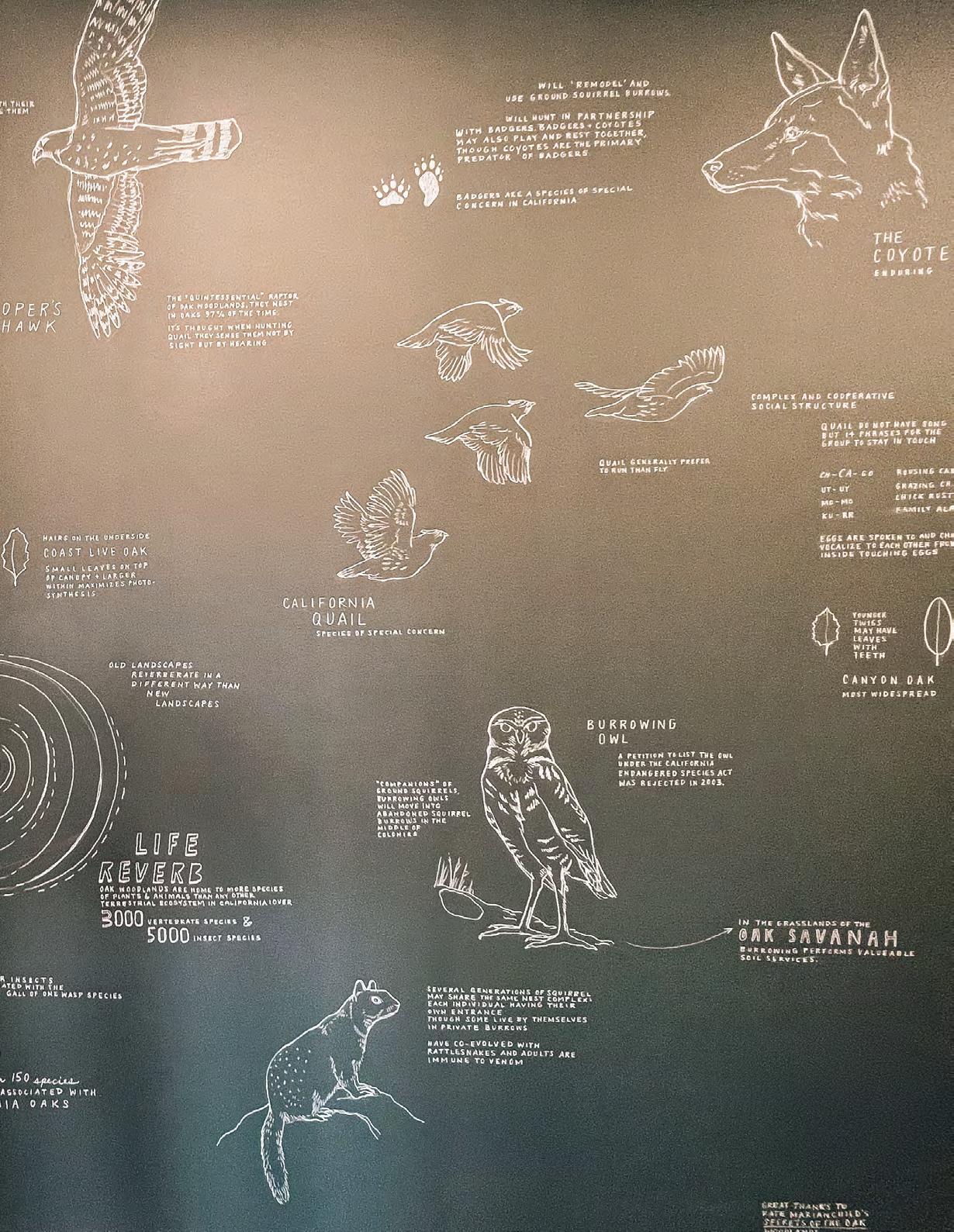
30th Anniversary
Dave Tilman, Distinguished Professor University of Minnesota & UCSB, National Medal of Science Awardee


30th Anniversary
Dave Tilman, Distinguished Professor University of Minnesota & UCSB, National Medal of Science Awardee
Dear Friends,
I’m delighted to share this impact report with you, which highlights NCEAS’ contributions to ecology and environmental science in celebration of our 30th anniversary. Beginning as a bold idea funded by the National Science Foundation in 1995, NCEAS has grown to be a trusted and catalytic partner for scientific discovery and effective environmental problem solving.
The changes in science and society since NCEAS opened its doors 30 years ago are remarkable. In 1995, email was relatively new, the internet was in its infancy, and scientists tended to be siloed, resisting sharing ideas and data. NCEAS played a key role in transforming the culture and practice of environmental science to be more open, collaborative, interdisciplinary, and synthetic. We’ve hosted hundreds of working groups, supported nearly 200 hundred postdoctoral research fellows, provided thousands of researchers with training in environmental data science, and built the data management and computer infrastructure needed to accelerate ecological research. I am deeply grateful to all the researchers, partners, and supporters who have made all this possible.
As we turn the corner on the first quarter of the 21st century, a new seismic shift is happening in the world of environmental science. The rapid acceleration of artificial intelligence (AI) is opening unparalleled opportunities for insight and discovery, but also risks that the tools will be poorly used or misused.
This year, NCEAS is launching a new initiative–AI for the Planet–that will leverage our 30 years of experience to support environmental applications and skill building with AI. NCEAS is committed to transforming how researchers harness the power of AI for environmental good.
To advance this vision, we are embarking on a focused effort to raise $10 million in support of NCEAS for this initiative. In partnership with environmental scientists, practitioners, and thought leaders, we will advance an agenda focused on a climate safe future, sustainable food systems, healthy oceans, and thriving biodiversity. We hope you will join us as we unlock new sustainability solutions and equip environmental leaders to accelerate discoveries that help the planet and people thrive.
I express my sincere thanks to all of you who support NCEAS–through research, data science learning programs, and generous philanthropic support. I joined NCEAS as a postdoc in 2003, and I’ve seen the center grow and change over the years. I am continually awed by the creativity of our community, the dedication of our researchers, and the positive contributions NCEAS is making toward a healthier and more sustainable world. The diversity of our community and our wide range of projects–from curbing plastic pollution to enhancing wildfire resilience–is what makes NCEAS so vibrant and impactful. I am honored to have spent so much of my career at this special place, and I look forward to seeing what we do together to help both people and the planet thrive.
Sincerely,

Ben Halpern Executive Director, NCEAS


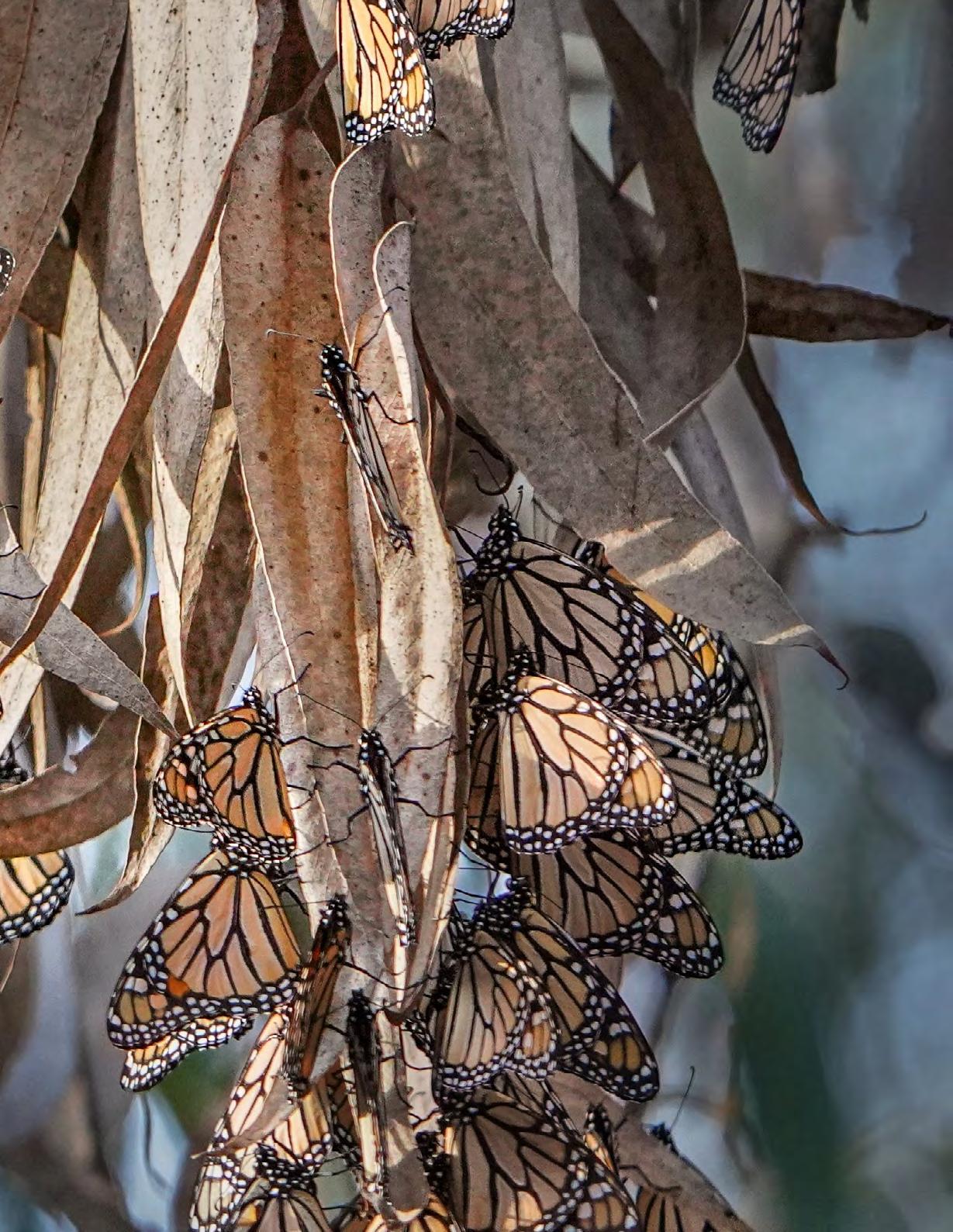
The National Center for Ecological Analysis and Synthesis at UC Santa Barbara is a world-renowned hub for environmental data science and discovery. Since 1995, NCEAS has been a trusted partner — mobilizing leaders in ecology and environmental science to tackle research that informs solutions. We transformed the culture and practice of environmental science to be more open and interdisciplinary, and we are equipping the next generation of environmental scientists with skills in collaboration and data science.
We accelerate scientific discoveries that will enhance our understanding of the world and benefit people and nature, as well as transform the scientific culture to be more open, efficient, and collaborative.
We do this by:
• Enabling collaborations between the brightest minds in the environmental sciences
• Conducting breakthrough science that is grounded in big-picture thinking
• Improving analyses through computing innovations that increase the (re)usability of data
• Partnering with agencies and organizations that can help put the science to action
• Training and inspiring generations of scientists to practice synthesis and open science
The following core values guide our work and mission:
Collaboration. We believe collaboration is necessary to understand the complexity of today’s environmental challenges and to seek solutions that will meet the needs of humans and nature.
Inclusivity and Fairness. We believe science must be inclusive and fair, supporting the full diversity of people and ideas that are critical to the integrity and progress of the institution.
Transparency. We believe science must operate in a transparent way, making data and knowledge accessible and free both within the scientific community and to the greater public. Cultivating an open culture in science is important not just for advancing scientific knowledge but also for fostering public trust in it.
NCEAS is one of the best things NSF ever did. It has been an astonishing incubator of creativity — a place where ideas are born, tested, nourished, and shared.
Jane Lubchenco
Former Administrator of NOAA and US Under Secretary of Commerce for Oceans and Atmosphere
“
For 30 years, we have been in the top 1% of ecological research institutions worldwide

We have published over 3,500 scientific papers
We have supported nearly 200 postdoc fellows
Our top ten papers have over 115,000 citations
We have hosted over 11,000 researchers from 70 countries
Our model has been copied at 30 global synthesis centers



Beds of iceplant, dotted with daisy-like flowers, carpet the roadsides and bluffs of coastal California. To many, the flowers are a beautiful addition to the coastal landscape. However, this familiar plant is an invader: it chokes out native plants and salts the earth beneath it.
In collaboration with NASA and The Nature Conservancy (TNC), NCEAS researchers are developing a comprehensive map of iceplant that will help reclaim the wild ecosystem of the Jack and Laura Dangermond Preserve at Point Conception.
“Iceplant is charismatic and showy; it looks like it could grow on another planet. That masks the insidious effect it has on native ecosystems,” said Mark Reynolds, director of the Point Conception Institute and lead scientist for the Dangermond Preserve, which TNC acquired in 2017 thanks to a visionary gift from Jack and Laura Dangermond.
The Dangermond Preserve is a 24,364-acre property at Point Conception, the sharp corner of coastline in Santa Barbara County. While this coast remained underdeveloped for nearly a century, human damage is evident, most pervasively in the form of sprawling swaths of iceplant. In the early 1900s, railway companies introduced iceplant to California to control erosion near train tracks.
Over the years, we have learned that iceplant actually has the opposite effect: it destabilizes coastal sands. Iceplant also outcompetes native plants for water and sunlight, creating a monoculture. Once it dominates a dune system, its heavy blanket suffocates the dynamic processes that create habitats for diverse plant and animal species. Burdened by iceplant, sand cannot move on the wind to replenish beaches. Many creatures depend on the dunes as a living system — and iceplant strangles it.
Iceplant covers about 1,100 acres of Dangermond Preserve. TNC plans to eradicate as much iceplant as possible, with a specific mandate from the California Coastal Commission to remove at least 300 of those acres. But, to eradicate an invasive species, land managers must first know where it grows.
“I realized that we had no clear picture of how much iceplant there is, and it occurred to me that we could see it from remotely sensed data,” said NCEAS data scientist Carmen Galaz García.
Galaz García developed an initial map of iceplant in Santa Barbara County through funding from Microsoft. Now, with NASA support, the project will use deep learning to combine satellite, airplane, and drone images into a single comprehensive map. Unlike machine learning, deep learning models can continually improve their performance as they process more data with minimal human intervention.
Satellites capture large areas but lack detail. Cameras mounted on airplanes provide detailed images but cover much smaller areas. Drones offer even greater detail but


cover the smallest area. It’s challenging to combine images with varying levels of detail into one map. That’s where deep learning comes in.
“A deep learning framework allows us to zoom in with the least loss in image quality and reveals details that were previously hidden,” said postdoctoral researcher Zhe Wang. “This is a long-term project. There are many invasive grasses with similar characteristics to iceplant, and we hope the framework can be applied to other invasive species.”
TNC has begun treating the first 300 acres of iceplant. As the project progresses, ongoing mapping will guide TNC to where iceplant might hide among native vegetation, or where it may have resurged.
“We see this as an opportunity to learn new techniques and take an experimental approach in using remote
sensing to understand iceplant and help us with early detection,” said Reynolds. “This project is a great example of the pathbreaking role NCEAS has had in conservation issues based on the synthesis of information.
NCEAS has a culture of creativity and real-world impact, which makes it an ideal partner for The Nature Conservancy.”
NCEAS researchers imagine scaling this project to create a global map of iceplant and an app that empowers citizen-scientists to report where they find it. A landscape freed from the crawling strands of iceplant is biodiverse and resilient, and that’s the vision shared by NASA, TNC and NCEAS.



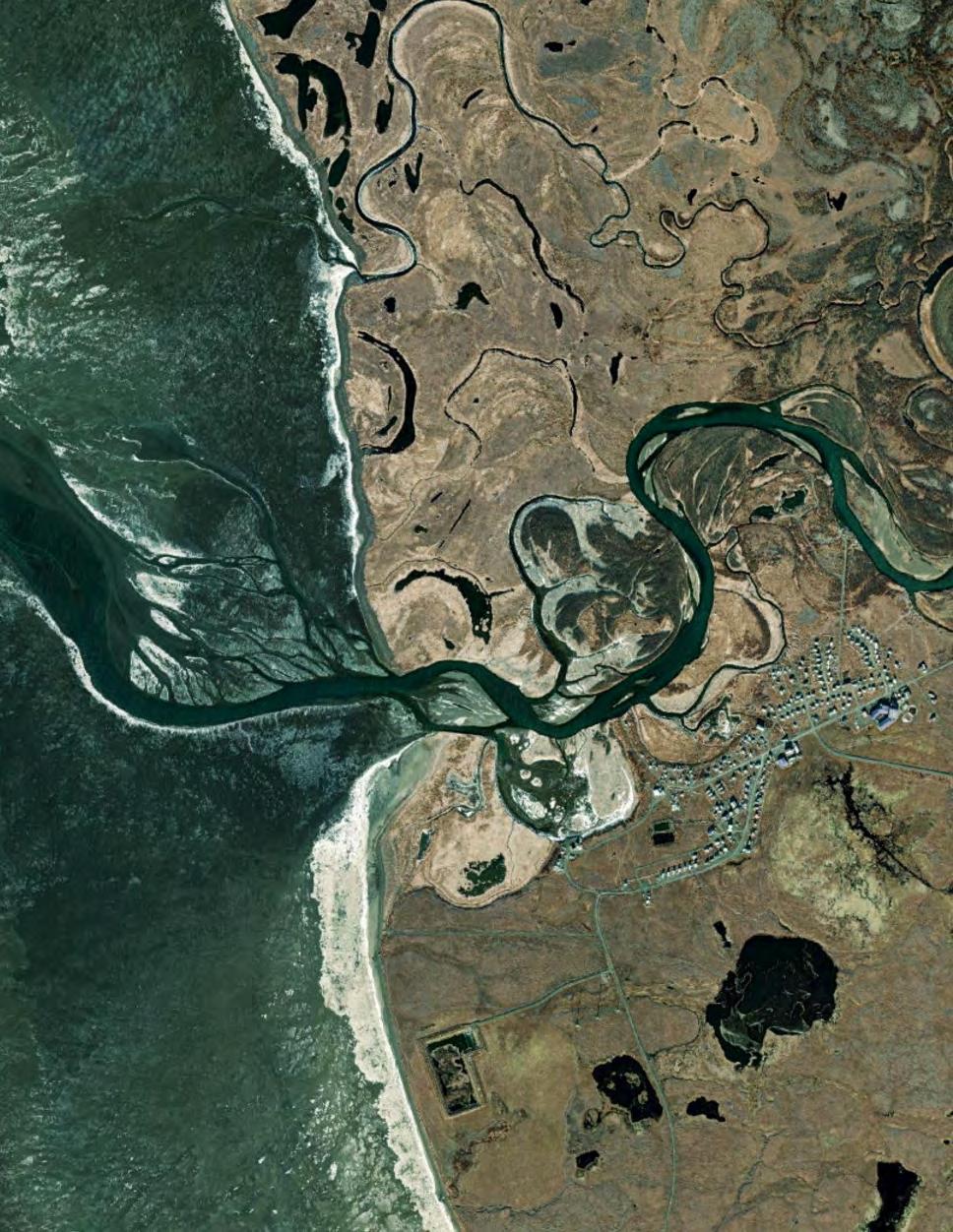
Within 25 years, 3.3 million people who live in the Arctic will lose their homes due to melting permafrost. As the Arctic heats at four times the global rate, this frozen ecosystem thaws, reshaping the landscape. Those who have lived on permafrost for generations now grapple with relocation as the ground sinks beneath them. Their communities are running out of time.
The Permafrost Discovery Gateway (PDG) synthesizes vast data on the location, condition, and extent of permafrost into digestible visualizations and analyses available to anyone with a web browser and an internet connection. This solution-oriented synthesis approach is how NCEAS makes an immediate impact on communities affected by thawing permafrost. Engineering firms, for example, can use this information to decide where to safely relocate villages, and communities can use it to understand how much time they may have before they need to move.
Led by Dr. Anna Liljedahl of Woodwell Climate Research Center in partnership with NCEAS, the Permafrost Discovery Gateway has received a $5 million investment from Google.org, after an initial $3 million grant from the National Science Foundation, to scale work, refine user experience, and implement artificial intelligence tools.
“First, we are using AI to generate big datasets via feature detection algorithms that are impossible to comb through manually. Which areas had high summer thaw, and why? AI can make suggestions for researchers to develop hypotheses and research projects, and it can do that at a scale where you can see the individual features mapped and outlined,” said Liljedahl.
The potential for AI to empower Alaskan communities specifically excites Liljedahl. She references the village of Newtok, which has almost finished its forced move from unstable permafrost to stable volcanic ground nine miles away, and imagines how AI and the PDG could be part of future relocation processes from permafrost projections to drafting proposals to support adaptation measures.
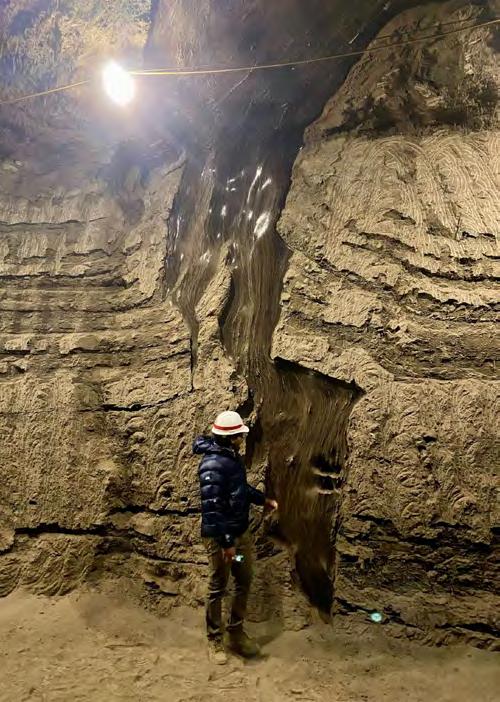
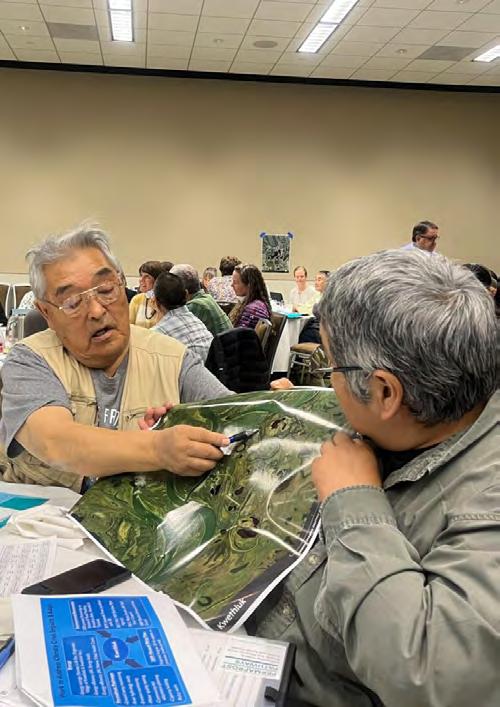
“The relocation of Newtok was expensive, and to gain funding to support relocation, you need a proposal writer and data. At some point, we could have an AI tool in the Permafrost Discovery Gateway that creates the figures to show, for example, how much ground has caved in because of thawing ice in the last couple years. The AI could then draft a proposal with those supporting examples,” said Liljedahl.
The Google.org grant also led to a massive change in scale, said Matt Jones, director of research and development at NCEAS and principal investigator of the Arctic Data Center, where the Permafrost Discovery Gateway is housed.
“Instead of running one slow and data-heavy model from 2016-2023, we will do monthly runs of that model. This will help researchers and residents see permafrost thaw in near-real time instead of in retrospect every 5-10 years,” said Jones.
These faster data visualizations will be accessible and user-friendly thanks to design updates to the portal. Google.org doubled down on their investment by providing staff support to the project in addition to the generous grant. Fifteen Google.org Fellows lent their expertise to the Permafrost Discovery Gateway for six months as part of the grant. Google.org Fellow and senior staff user experience designer Doug Hungarter co-designed an inviting interface.
“The team was made up of specialists from both academia and the private sector. This unique structure lets us leverage the experience and delivery platform from UC Santa Barbara’s NCEAS; cutting-edge computer vision and feature detection capabilities from partners like UConn, Illinois, and the Alfred Wegener Institute; and expertise in AI/machine learning, scaling, and automation from Google.
Combining our broad experience and perspectives leads to stronger products than our respective organizations might create individually,” said Hungarter.
When you’re walking on the ice, you can observe changes in topography from one meter to the next: puddles of ice melt, swampy ground. The Permafrost Discovery Gateway takes those small-scale field measurements and synthesizes them alongside massive historical datasets to paint clear pictures of permafrost thaw for people who urgently need them.
The Permafrost Discovery Gateway will not only help Alaskan villages adapt to a changing landscape but also inform international climate policy. This work makes permafrost change more prevalent in the consciousness of those working on climate issues, and in doing so, motivates action to halt further loss of this critical and underappreciated ecosystem.

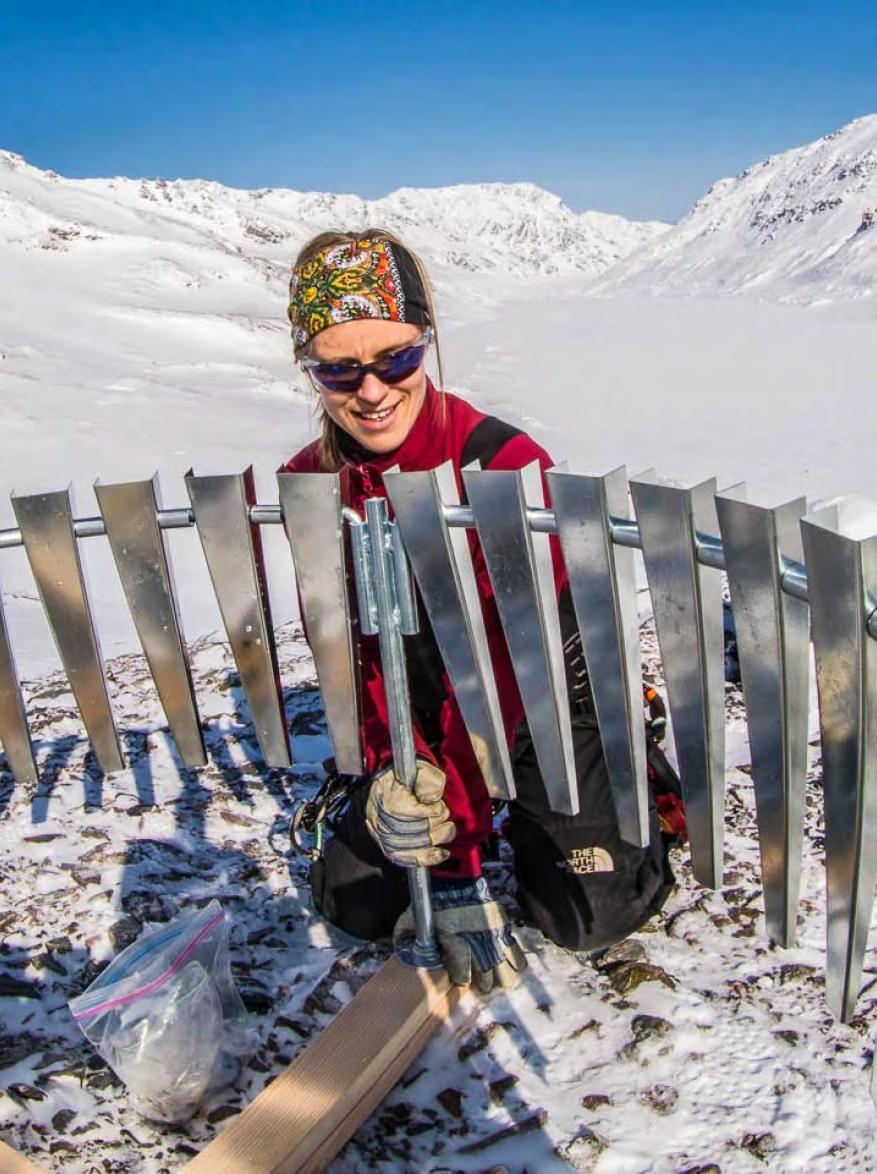

What’s on your grocery list this week? Whether you’re picking out apples or salmon, every choice impacts the planet. It can feel overwhelming, even impossible, to make sustainable choices through a deluge of scattered information. Researchers at NCEAS have created the first-ever comprehensive ranking of foods from a sustainability perspective, helping consumers and policymakers make decisions with confidence.
Previous work in this field focused on certain foods and one environmental pressure, like beef and greenhouse gas emissions. NCEAS research put everything on the same table, from seafood to crops and livestock, and then compared environmental consequences across habitat disturbance, climate emissions, water use, and nutrient pollution. The result is a clear map of how these foods relate to each other, and there are some surprises.
Most notably, all seafood — both wild and farmed — has a lower environmental impact than livestock. Wildcaught marine fisheries, in particular, require essentially no freshwater or fertilizers, eliminating two major environmental pressures. Shellfish like clams and mussels rank especially high in sustainability. However, not all seafood is equal: bottom-trawl fishing, which disturbs the seafloor and releases stored carbon, makes wildcaught cod less eco-friendly than chicken.
“The narrative of “aquaculture bad, wild good” is now challenged by quantitative data. This has influenced both public discourse and sustainability policy. Environmental non-profits that previously discouraged aquaculture are now seeing it in a new light. I have seen that shift in just a decade of doing this work, which is pretty extraordinary,” said Halley Froehlich, former NCEAS postdoctoral fellow and current UCSB associate professor, who co-authored the research.
The NCEAS research team didn’t stop there. They also mapped global food consumption to understand potential injustices in how the environmental footprint of food is distributed.
“We use the phrase ‘environmental footprint’ deliberately: it’s about literally mapping where the impact happens,” said Ben Halpern, lead principal investigator and NCEAS director. “We asked: What does this mean for people beyond their diet and nutrition? We need a better understanding of the consequences of all food production for planetary health.”
NCEAS scientists and practitioners initially thought that wealthy countries might displace their environmental footprint onto poorer countries. While their research found that this narrative was not strongly supported, it did reveal that trade patterns and environmental footprints are unevenly distributed. Forthcoming papers begin to answer questions about which countries pay the price for food eaten around the world.
Global partners like WorldFish, which is headquartered in Malaysia, brought deep expertise to the research from a non-Western viewpoint. The WorldFish mission is to work with local and national partners in the Global South to reduce hunger and malnutrition by developing innovative solutions to improve aquatic food systems.
“Large multinationals and powerful governments play a role in setting the global food agenda, but most of the world’s food producers are small-scale and household enterprises in the tropics. Additionally, tropical Asia and Africa are home to the majority of food consumers.
“In this landscape, having rigorous and objective science like the work NCEAS produces is essential.
We can’t always step back from our work at local and national level to conduct large-scale synthetic studies, but NCEAS is a world leader in this area. They are a valued partner for us because we can’t do this work alone,” said Eddie Allison, principal scientist at WorldFish.
The cumulative food choices of eight billion people put pressure on the planet, often in unexpected ways. This research could help scientists and policymakers anticipate and relieve some of that pressure.
“Research at NCEAS is always driven by the goal of making everything freely available so others can build on it for next-generation work,” said Halpern. “Some might apply our methods to domestic food production in the U.S., while others could use our spatially mapped environmental footprint data to understand its impacts. Hopefully, the world’s creative minds will take these data and push them in unexpected directions. That kind of collective innovation is core to our approach at NCEAS.”



decades of collaborative
A deep-sea diver off the coast of the Azores navigates a hidden world. They float over dizzying abyssal cliffs, where the ocean floor suddenly plunges to dark depths, and traverse volcanic caverns. Crevices shelter octopuses and lush deep-sea corals teem with colorful creatures. The diver might encounter a whale, or stare into the flat silver face of a 5,000-pound sunfish.
Today, 30% of the waters surrounding the Azores are safeguarded as part of the largest marine protected area (MPA) network in the North Atlantic. This achievement marks a monumental step forward in ocean conservation — one made possible by decades of research and collaboration that began 25 years ago at NCEAS.
“MPAs increase the abundance and diversity of critters inside the protected area, and much of that bounty spills outside. If we want healthy, productive, resilient ocean ecosystems, we need marine reserves,” said Dr. Jane Lubchenco, distinguished professor at Oregon State University and deputy director for climate and the environment for the White House Office of Science and Technology Policy under President Biden.
The Azores MPA network is more than a local victory. It’s a beacon of progress for the global goal to protect 30% of the planet by 2030, or 30x30, as declared at the 2022 United Nations Biodiversity Conference. It exemplifies the impact of work that began in 1999 when scientists, policymakers, and members of the global fishing community gathered for an NCEAS working group. Their mission: to determine how to protect and enhance marine life through MPAs.
At the time, a fragmented 0.01% of the ocean was protected in marine reserves. Lubchenco recalls the questions that swirled around MPAs. How many do we need to help marine life recover? How big do they need
to be, and how far apart? What kind of protections should exist — fully protected zones that prohibit all fishing, or protections for specific species?
“Most of the scientists involved then had never worked on MPAs before,” said Lubchenco, who co-led the working group. “Now, they are the experts who advise governments and interpret the science for citizens who design MPA proposals. NCEAS creativity and excitement took on a life of its own and inspired individuals
as well as scientific advancement.”
The NCEAS group published a groundbreaking collection of 25 papers that formed the scientific basis for modern ocean conservation around the world. Creative communications partnerships brought the science to changemakers. Ultimately, these studies provided the scientific backing for international policies. Each new MPA brings us closer to achieving the 30x30 vision: 8% percent of the world’s oceans are safeguarded today.
That work was just the beginning. Research for a more vibrant ocean continues at NCEAS, currently through a team that develops and deploys an interactive tool for global MPA design: SeaSketch. From the Maldives to British Columbia, communities use SeaSketch to share guiding knowledge about which parts of the ocean are culturally and economically important. SeaSketch was instrumental in shaping the Azores MPA network.

SeaSketch has long been supported by the Waitt Institute, which has been supporting governments in their efforts to undertake marine spatial planning and to establish MPA networks in island nations around the world.
“When we started our partnership with Barbuda in 2013, we conducted dozens of ocean-use surveys with
SeaSketch,” said Dr. Kathryn Mengerink, executive director of the Waitt Institute. “Fast forward to our partnership in the Maldives. In 2021, our Maldivian team conducted surveys on all of the 180 inhabited islands, which represented more than 25,000 people who use the ocean. This increase in scale is one of my favorite SeaSketch success stories.”

SeaSketch accelerated the Azores MPA system by gathering community knowledge and iterating quickly. Feedback about fishing and tourism was combined with environmental data, and in partnership with the community, SeaSketch scientists created maps and reports to optimize both the protection of marine habitats and continued local livelihoods.
The Azores offer a vision for the future of our oceans. Island nations are on the frontlines of challenges like depleted fisheries and biodiversity loss. But with the help of tools like SeaSketch, they are also at the forefront of the solution, leading the way in marine conservation. When we safeguard our seas, we build a more resilient future.

In Alaska, Indigenous communities are prohibited from fishing while commercial trawlers tow nets that catch everything in their path — discarding the salmon that is caught in the process.
“I grew up on salmon, which we consider a relative. When they’re not doing well, neither are we, physically and culturally,” said Dr. Jessica Black, who is from Fort Yukon and the village of Nana. “In the Yukon River, populations of Chinook and chum salmon have almost collapsed. When you’ve made the people of a place invisible or excluded them, there are severe consequences.”
Alaska needs a paradigm shift that centers Indigenous perspectives. Led by NCEAS in 2016 and 2017, the State of Alaska’s Salmon and People (SASAP) bridged Indigenous and Western science knowledge systems to create an equitable decision-making platform for salmon management and set a shared research agenda with efforts that continue today.
The relationship between salmon and Alaska Native people stretches back over 10,000 years, but Western salmon management ignores millennia of traditional knowledge. It harms Indigenous people through policies like criminalized subsistence fishing and revoked rural fishing rights.
The Gordon and Betty Moore Foundation invested $2.3 million over two years to synthesize knowledge about the interconnected relationship of people and wild salmon in Alaska. Over 100 researchers, practitioners and Indigenous leaders formed eight working groups to focus on social, legal, cultural, economic and environmental concerns.
Drs. Jessica Black and Courtney Carothers of University Alaska Fairbanks, along with Dr. Rachel Donkersloot of the Alaska Marine Conservation Council, led the “Sociocultural
Dimensions of Salmon Systems” and “Well-Being and Alaska Salmon Systems” SASAP working groups. These went beyond traditional ecology to elevate the values and human relationships that are marginalized in quantitative research. Researchers collected and analyzed oral histories, archival records and Indigenous knowledge to create new conceptual frameworks. All working groups came together at NCEAS to collaborate and exchange knowledge.
“When the working groups convened at NCEAS, we crossed disciplines and cultures and ages and career stages. From the first welcome, we felt included. As a host institution, NCEAS supported disrupting the presumed hierarchy of Western science,” said Carothers.
Participants brought with them feedback collected from Indigenous Alaskans through events and conferences. Community surveys informed the content and format of the information shared on AlaskaSalmonandPeople.org data portal, a key SASAP tool. The online resource aggregates western science and Indigenous knowledge with the aim of making salmon decision-making more inclusive and equitable.
As part of this process, NCEAS launched a Data Task Force to wrangle 9GB of disparate datasets into standardized, searchable formats for more efficient working group research. This “search and rescue” effort changed the game by offering a comprehensive view of the entire Alaskan system. The data is available in the online portal for all salmon stakeholders.
“The challenge for any private funder is the perception that Alaskan salmon systems and salmon people are in much better shape than in the rest of the world. Despite this perception, people are experiencing salmon loss.
There’s a need for more up-to-date information and a coherent Alaska salmon research agenda,” said SASAP co-principal investigator Ian Dutton, who formerly led Nautilus Impact Investing.
Many voices contributed to SASAP work, and many more projects have stemmed from it. Black and Carothers continue their work through Tamamta, an NSF-funded graduate research traineeship to reverse the near-complete absence of Alaska Native people in resource management. Along with colleagues in the Indigenizing Salmon Science and Management project, Black and Carothers return to NCEAS for an annual writing retreat.
“These projects [take the same] participatory approach that enabled us to come together through SASAP,” said Carothers. “We’ve been back to NCEAS three times with our own projects, along with Indigenous Elders and others who wanted to gather again in the meeting space and be part of the NCEAS community.”
Through SASAP, NCEAS has built capacity for further transformational work in Alaska salmon systems.
When the working groups convened at NCEAS, we crossed disciplines and cultures and ages and career stages. From the first welcome, we felt included.
Courtney Carothers,
University of Alaska Fairbanks






1995 NCEAS founded as the first synthesis center by the National Science Foundation, with an award to UC Santa Barbara — giving the university a downtown Santa Barbara presence by opening its doors in the historic Balboa Building on State Street.
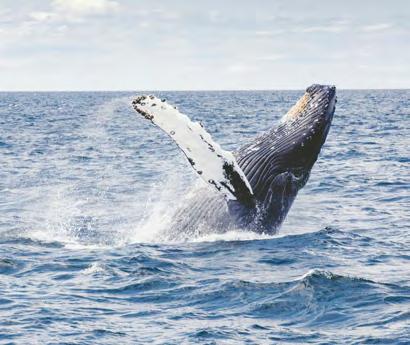
2012 The first assessment of ocean health for every country on the planet is completed through the Ocean Health Index — led by NCEAS to provide a holistic picture of the environmental, social, and economic state of our oceans.
1996 Research at NCEAS calculates the total economic value provided by natural ecosystems globally, elevating the way nature is considered in policy decisions by assigning it economic value and changing how management and conservation is done around the world.
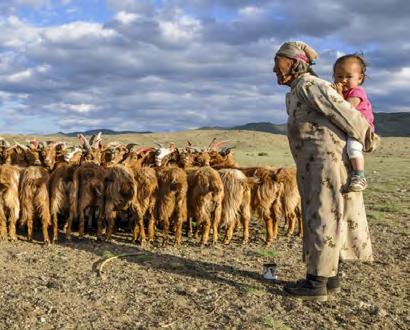
2013 The Science for Nature and People Partnership is established between NCEAS, The Nature Conservancy, and Wildlife Conservation Society to deliver evidence-based, scalable solutions to global challenges at the intersection of nature conservation, sustainable development, and human well-being.

1997 NCEAS launches Kids do Ecology program linking professional ecologists with 5th grade students in Santa Barbara and beyond.

2016 Ben Halpern becomes Director, after serving as a postdoc and research scientist at NCEAS since 2003.


2005 NCEAS recognized as top 1% of cited institutions worldwide in ecology and environmental science by ISI Essential Science Indicators.

2018 Artist in Residence program begins at NCEAS to bring science and art together for new forms of knowledge and expression. Over the years 12 artists have participated in the program, with community partners including The MOXI, SB Cast, Music Academy of the West, and others.
Working group at NCEAS conducts research that informs a congressoinal report on policy needs to protect pollinator species.
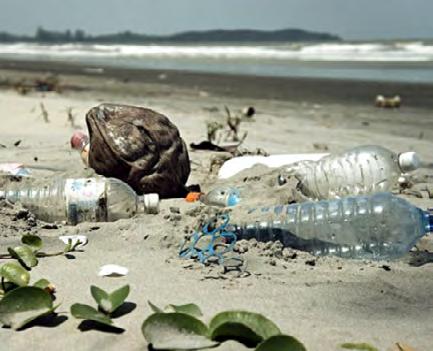
2011 NCEAS research tallies the first global estimates of trash in our oceans, changing the conversation around plastic waste and supercharging the fight to curb plastic pollution.

2023 The Gordon & Betty Moore Foundation invests in NCEAS to develop the Western Wildfire Resilience Index — an assessment tool for ecological, community, and economic readiness and risk associated with fires in the North American west.
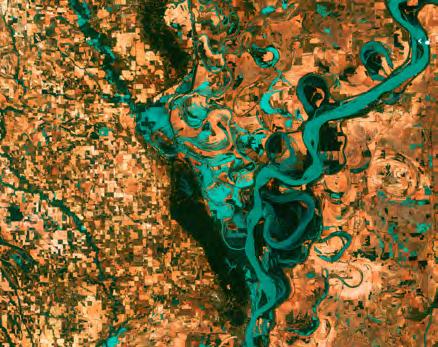
2025 NCEAS celebrates its 30th anniversary and launches a new AI for the Planet initiative to harness the power of AI to mobilize environmental action.



The NCEAS Learning Hub is committed to creating a welcoming and accessible environment where anyone can confidently step into the world of data science. Our mission is to empower environmental professionals to more efficiently and effectively tackle the pressing challenges of our time. We offer a range of in-person and virtual training opportunities, which equip participants with technical, organizational, and communications data science skills to lead data-driven environmental projects and develop practical solutions.
Since 2017, over 850 people have participated in our Learning Hub program, which serves professionals at every stage — from early career to senior roles, as well as undergraduate and graduate students. The short-course nature of this program draws participants from environmental non-profits, government agencies, the business sector, and academia.
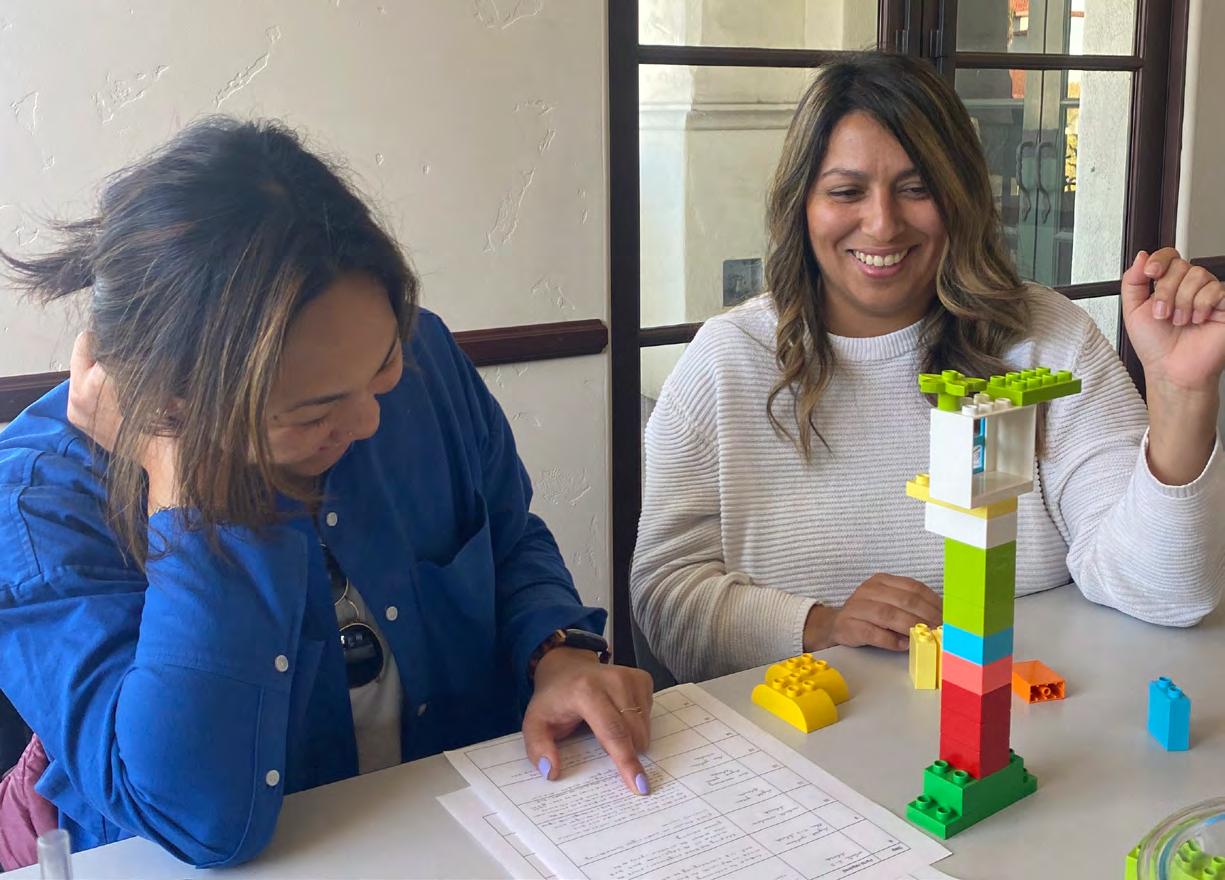

“I’ve had experience with R, but I haven’t felt confident or empowered until this course. The NCEAS fellowship allowed really critical career growth. I gained confidence and a deep appreciation for data science that has encouraged me to seek additional experience in this field after graduation.”
Lena Capece, PhD Candidate UCSB
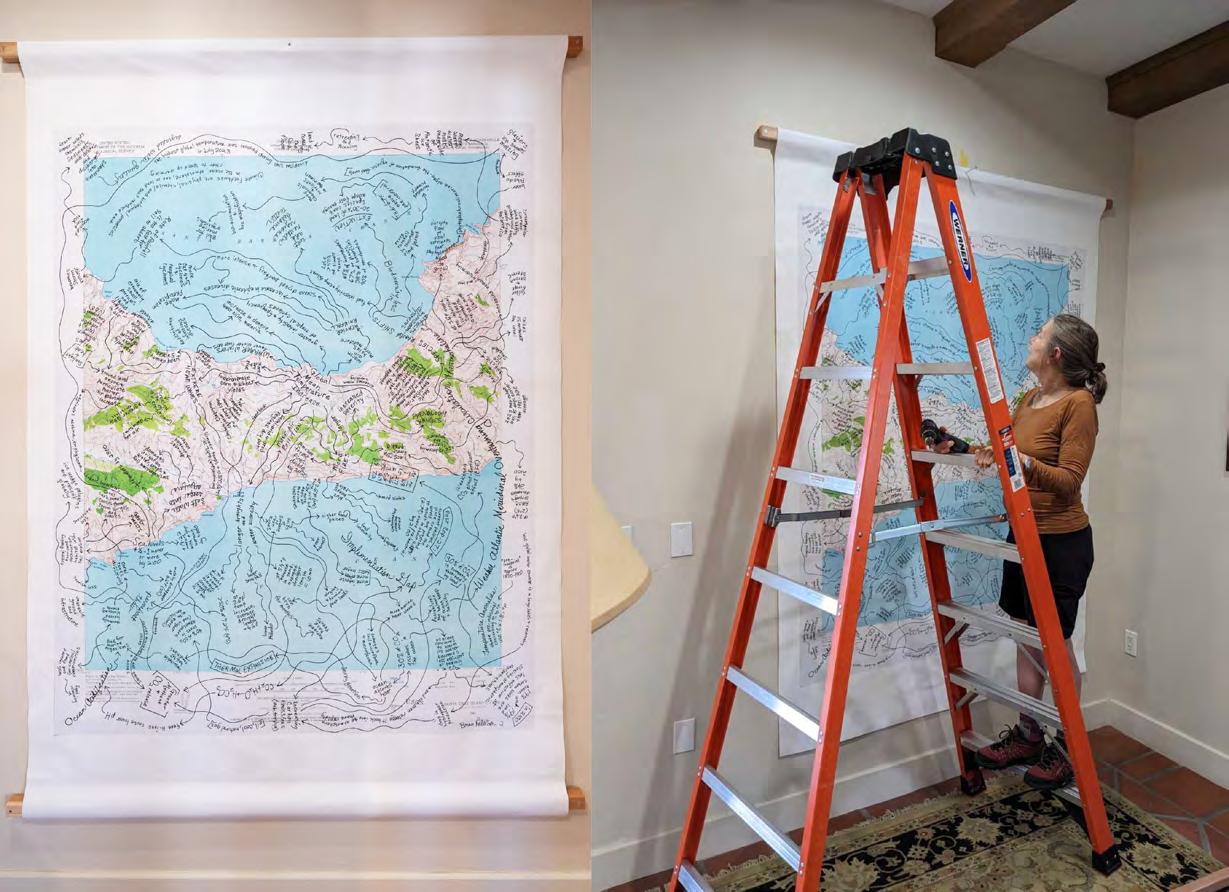
At NCEAS, we believe Art and Science play key roles in nurturing the innovative thinking we need to address the complex changes we are currently experiencing across the globe.
While they each communicate the complexity of our world differently–science with data and facts, art with the imagination and feelings–both entail a process of asking new questions and exposing possible answers.
In 2018, NCEAS founded an artist in residency program where artists and environmental scientists come together to work in dialogue and inspire each other. Our goal is to unleash new levels of creativity and innovation in the ways we think about, communicate, and solve the world’s most pressing environmental challenges. Over the course of the program, we have hosted 12 artists working across disciplines from poetry to murals, chamber music to embroidery, sculpture to comic books, and beyond.

The residency gave me the rare opportunity to engage directly with scientists about my concepts. The immediacy of these interactions shaped my work as it was being created, much like the scientific process. This was invaluable to me both in deepening my view of interdisciplinary connection and in mirroring the iterative processes inherent in both science and art.
Leila Youssefi, Muralist

I think about my time at NCEAS very much like the title of the piece I composed while there, COCOON. It’s a place where you can imagine enormous amounts of energy churning inside, and that which gets revealed to the world reflects the beauty inhabited therein. I’ll never forget my time at NCEAS, most notably the people, who left an indelible mark in my mind.
Jim Stephenson, Composer



Combating climate change and sustaining nature while ensuring thriving human communities are the major challenges of our time. Urgent and immediate action is needed if we are to create a sustainable future. Artificial Intelligence holds both promise and peril as a tool in this era of change. AI is rapidly advancing and evolving, but few scientists are equipped to utilize AI’s potential to change our current trajectory to benefit the planet, and those that are remain scattered and poorly connected.
With the AI revolution speeding ahead, now is the time to direct its power towards people and the planet, and to make sure that is done responsibly. We need to bring together the community of environmental researchers using AI to share lessons learned and advance the field in both technological and ethical directions. Likewise, we need to build a diverse workforce of people enabled with the technical, scientific, and collaborative skills to harness the power of AI for environmental good.
AI will play a pivotal role in future scientific advancement. We need to make sure the environmental research community is ready to harness the power of AI while anticipating both the great advantages and potential risks it poses. NCEAS is ready to act as the convener, catalyst, and conveyer needed to support the environmental science community as we advance together into the AI for the Planet frontier. The next generation of AI-enabled science needs openness, many voices, ethical guidelines, reproducibility, and training support. NCEAS has led a scientific revolution around these imperatives before, and we will harness our three decades of experience to help lead the next revolution towards AI-enabled conservation.
NCEAS will focus on four areas to help the community harness AI for the Planet in revolutionary and responsible ways.
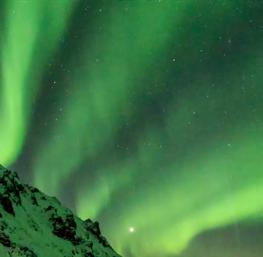
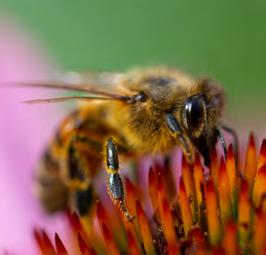


Over the past 30 years NCEAS has transformed the way people do science. We are ready to do it again.
Solving today’s complex environmental problems requires creativity, collaboration among scientists and policymakers, and the innovation of new tools and techniques. The wave of AI, coupled with vast and growing amounts of environmental data, presents emerging opportunities to use machine learning and AI to advance solutions to key sustainability challenges. With a strong history in leveraging AI to uncover environmental solutions, NCEAS is prepared to direct the power of AI towards a sustainable future for both people and the planet. By training the next generation of environmental data scientists with the critical thinking and technical skills to use AI effectively, we will build a diverse workforce equipped to harness the power of AI for environmental good.
In honor of NCEAS 30th anniversary, we seek to raise $10M for this initiative. Join us as we harness the power of AI to catalyze a more sustainable future. Your investment will help unlock new environmental solutions and equip the next generation of environmental leaders. Funding priorities include:
AI for the Planet: Catalyzing a Climate Safe Future, Thriving Biodiversity, Healthy Oceans, and Sustainable Food Systems. Accelerate the application of AI innovations for a more sustainable future through solutionsoriented research.
Postdoctoral Fellowships and Early Career Researchers: Incubating Environmental Innovation and Leadership. Jumpstart the career of young environmental scientists. NCEAS postdocs and researchers have the unique experience of embedding within a dynamic community, with access to top resources for training and research, while working together with a cohort of peers.
Innovation Workshops: Convening to Generate AI-Enabled Solutions to the World’s Grand Challenges. Propel innovative thinking and new ideas through focused workshops that bring together thought leaders to share knowledge and drive environmental change through AI-enabled science.
Learning Hub: Training the Next Generation of Environmental Data Scientists. Equip future environmental leaders with the skills needed to harness AI and machine learning to solve complex problems by supporting scholarships for participants in NCEAS data science bootcamp program.
We invite you to join us in celebrating our 30th anniversary by making a gift to NCEAS. With the AI revolution speeding ahead, now is the time to direct its power towards people and the planet, and to make sure that is done responsibly. An investment today will harness the power of AI to mobilize environmental solutions. Naming and recognition opportunities are available for discussion. Together we can make a difference.
I keep telling people that NCEAS was the best idea the National Science Foundation ever had. Truly. The institution has catalyzed a whole new way of doing ecology in a way that synthesizes what is known, pushes into the unknown, and makes all of this available to decision makers and the public. It’s been transformative, and is now imitated in other countries around the globe.
Boris Worm, Professor, Dalhousie University
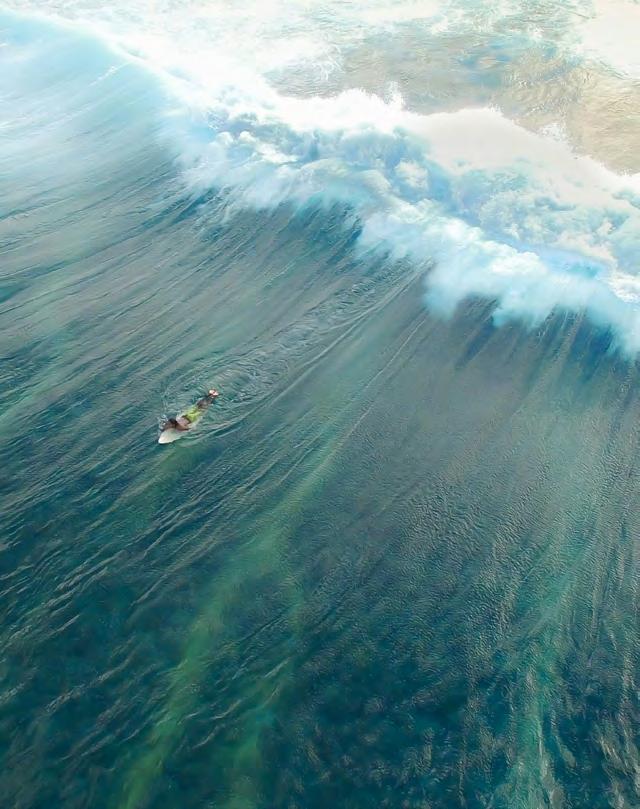

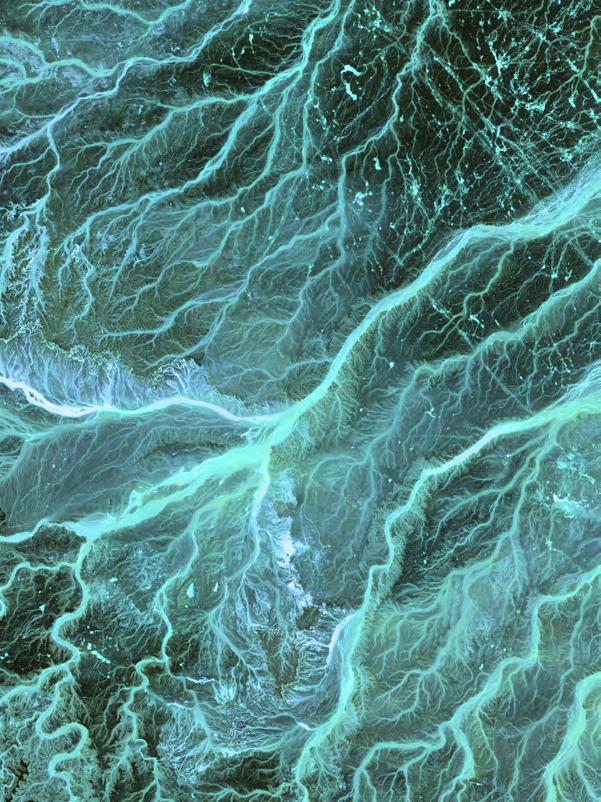

Ben Halpern, Executive Director
Marty Downs, Director, Long Term Ecological Research Network Office
Matt Jones, Director of Research and Development, Informatics
Michelle Morris, Business Officer
Jim Regetz, Director of Research Software Engineering
Courtney Scarborough, Deputy Director
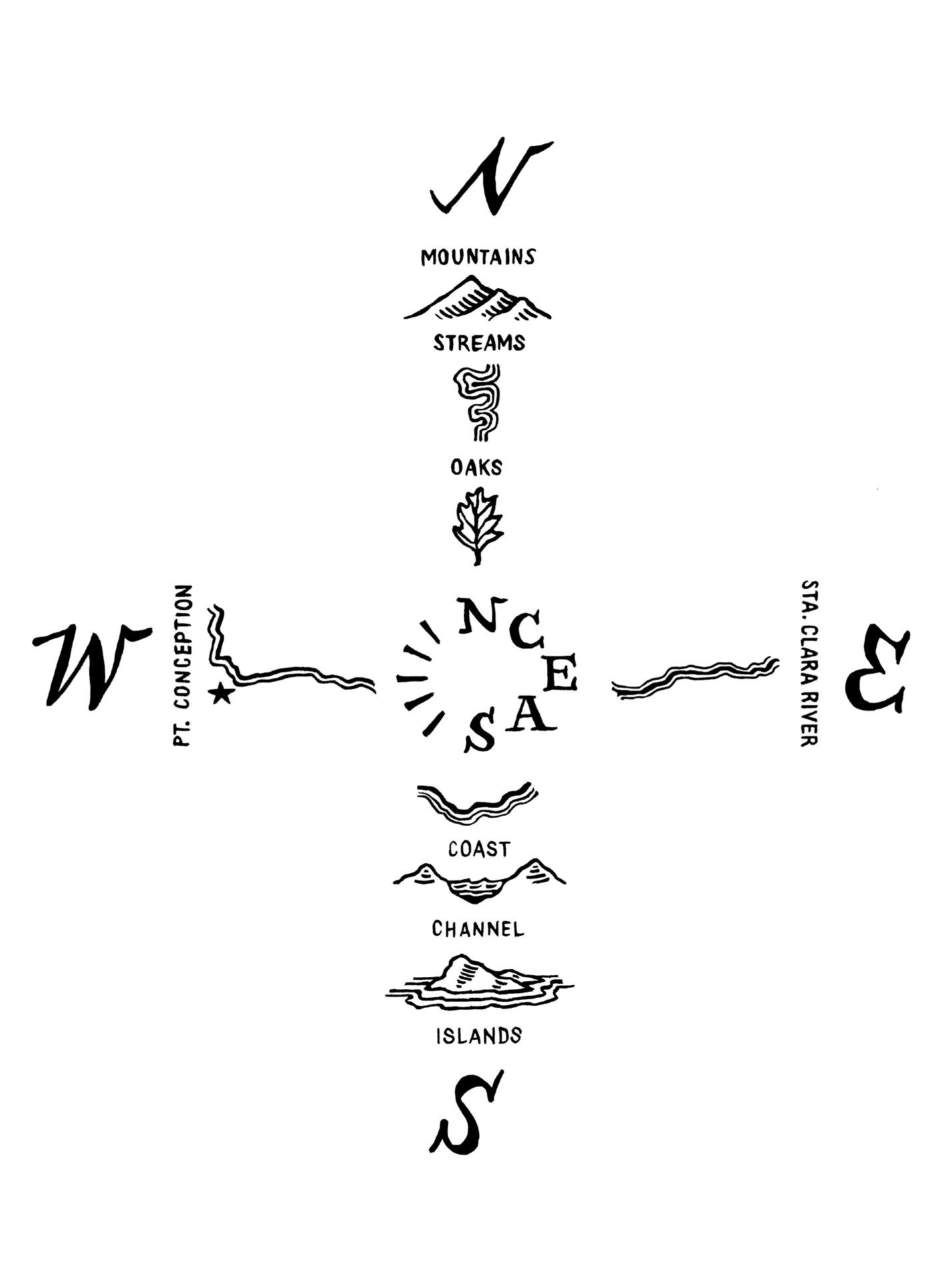
To learn more and support NCEAS, please contact:
Ben Halpern
Executive Director, NCEAS halpern@ucsb.edu
Sarah Sikich
Senior Director of Development, Ecological & Environmental Sciences 805-893-3988 · sarahsikich@ucsb.edu

Art is a process of observation. So is science. They have a natural correspondence to build on.

On the cover NCEAS hosted Elkpen as an artist-in-residence in 2023. Elkpen’s practice is rooted in drawing and considers nature’s relevance to us.
